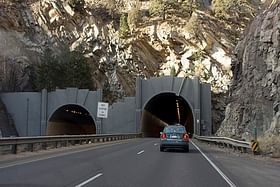Once completed, it will only take 6-8 minutes to travel between the Coastal Road on Marine Drive and the start of the Eastern Freeway at Orange Gate, in both directions.
These tunnels will pass beneath both the Central and Western Railway lines, as well as the underground Mumbai Metro line 3.
After the monsoon season, the Mumbai Metropolitan Region Development Authority (MMRDA) will begin work on carving out Mumbai’s longest twin tunnel. The MMRDA is currently in the final stages of selecting a private infrastructure company to carry out the project.
The twin tunnel will be designed to be signal-free, improving traffic flow and reducing congestion.
Recently, the MMRDA opened bids it got from Larsen & Toubro (L&T) and J. Kumar Infraprojects. L&T emerged as the lowest bidder, offering a quotation of Rs 7,765 crore compared to J Kumar Infraprojects’ Rs 8,589 crore.
The MMRDA had estimated the project cost to be Rs 6,327 crore, which is Rs 1,438 crore lower than the lowest bid, reports Free Press Journal.
The MMRDA officials will now present the proposal to its Executive Committee and then to the Authority, which is chaired by Chief Minister and MMRDA Chairman Eknath Shinde. Only after receiving approval from these two bodies will the necessary manpower and machinery be mobilised to the construction sites.
The twin tunnel is designed to be signal-free, aiming to reduce travel time on the road. Once completed, it will only take 6-8 minutes to travel between the Coastal Road on Marine Drive and the start of the Eastern Freeway at Orange Gate, in both directions.
The target is to have the twin tunnel ready by mid-2027, providing a better traffic dispersal plan for vehicles coming from South Mumbai and the Coastal Road, and heading towards Navi Mumbai.
The upcoming tunnel in Mumbai is set to become the longest underground road in the city, spanning a distance of 3.1 km. This will surpass the lengths of the other two twin tunnels, located on the Eastern Freeway (1 km) and near the nearly completed Coastal Road (2.7 km).
Each of the proposed twin tunnels will consist of two lanes, providing sufficient capacity for traffic flow. These tunnels will pass beneath both the Central and Western Railway lines, as well as the underground Mumbai Metro line 3. The metro route, known as Colaba – Bandra – SEEPZ, runs at a depth of 25-27 metre, while the tunnel will be situated at a depth of 30 metre.
The decision to construct the tunnel was driven by the limited options available for road expansion. Widening the existing roads was not feasible, and an elevated road would have posed challenges due to the presence of heritage structures in South Mumbai.
Additionally, an elevated road or tunnel aligned with the existing Sardar Vallabhbhai Patel Road would require the acquisition of prime real estate and face significant time constraints. Another factor influencing the choice to go underground was the need to ensure the unobstructed passage of taller Ganesh idols to Girgaum Chowpatty.
Another traffic dispersal plan in progress is the construction of the Sewri-Worli Elevated Road.


